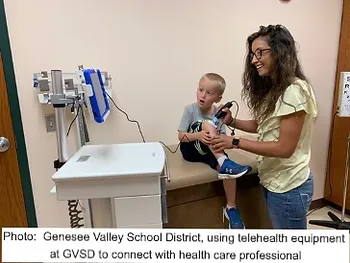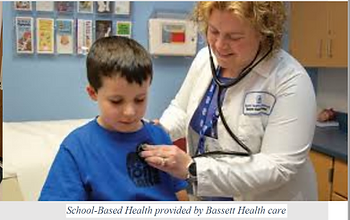If you’ve determined that you’d like to open or improve a School Based Health Center (SBHC) in your school or district, first explore the Principles and Guidelines for School Based Health Centers in New York State. It is of particular importance to note that in New York State specifically, policy mandates that “All SBHCs must provide age appropriate, on-site, core primary care services that comply, in content and frequency, with New York State’s Child/Teen Health Plan (CTHP). Age appropriate reproductive health care is to be considered an essential component of comprehensive primary care (New York State Department of Health, 2017). While some schools have had to overcome considerable objections from the community on this issue, New York State law mandates reproductive health in an SBHC. Furthermore, 24-hour coverage and requisite collaboration with a sponsoring healthcare agency is necessary.
Once you’ve determined if this option may be right for your school or district, there is an abundance of resources available to support planning and implementation of the SBHC. As discussed in previous posts, the best resource to connect with for more information is the School Based Health Alliance of New York. The Alliance offers a wealth of resources on the topic, such as keys to sustainability. According to the national branch of the School Based Health Alliance, experts agree that sustainable SBHCs share three common characteristics – each of equal importance. To ensure long-term SBHC sustainability, a center must:
-
Develop and nurture Strong Partnerships with school and community stakeholders committed to SBHCs; and
-
Create a Sound Business Model that relies on a variety of stable and predictable funding sources; and
-
Operate health care practices that meet the comprehensive needs of students and demonstrate a High-Quality Practice. (School Based Health Alliance, 2020).
For more information on SBHC sustainability, click here.

Key Insights to Sustainability with Dr. Chris Kjolhede of Bassett Healthcare System
To further support this discussion, we had a key conversation with Dr. Chris Kjolhede of Bassett Healthcare System, who has worked with rural school districts developing SBHCs for over two decades. There are some fundamental topics to consider in terms of what an SBHC is and what it is not. Key areas discussed were: SBHCs partnerships, funding, space and community support, and having a plan for sustainability. A link to the full discussion may be found here. In the next post, we’ll expand on topics discussed from the conversation with Dr. Kjolhede, titled, Blog Post 4: Keys to SBHC Success – Financing, and More.
References:
New York State Department of Health. (2017). Principles and Guidelines for School Based Health Centers in New York State. https://www.health.ny.gov/facilities/school_based_health_centers/docs/principles_and_guidelines.pdf
School-Based Health Alliance. (2020). National School-Based Health Care Census | School-Based Health Alliance National School
Based Health Care Census | Redefining Health for Kids and Teens. https://www.sbh4all.org/school-health-care/national-census-of-school-based-health-centers/
Sipple, J., & Casto, H. (2007). School-Based Health Centers in NYS [Report]. Community and Rural Development Institute (CaRDI);
Cornell University. https://ecommons.cornell.edu/handle/1813/56019



